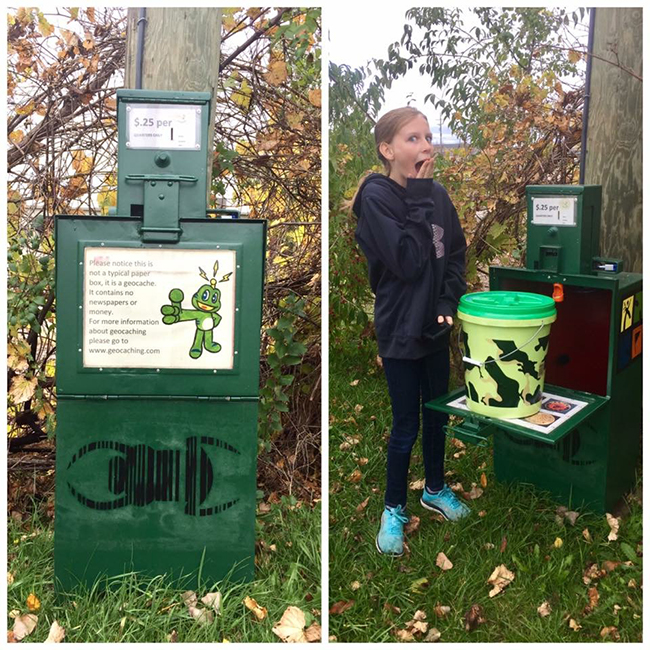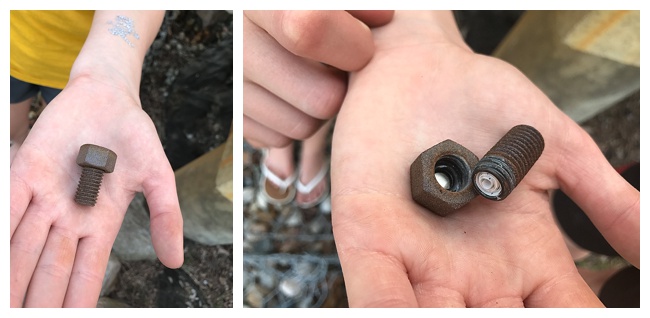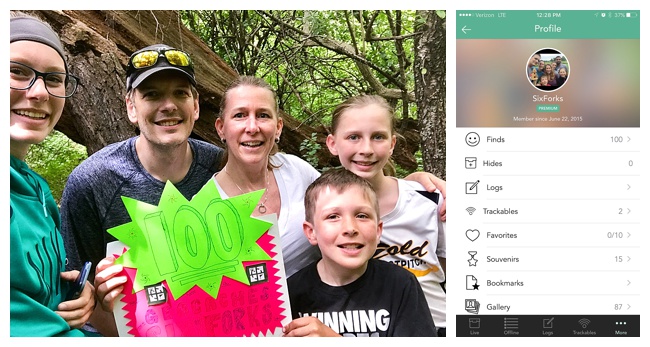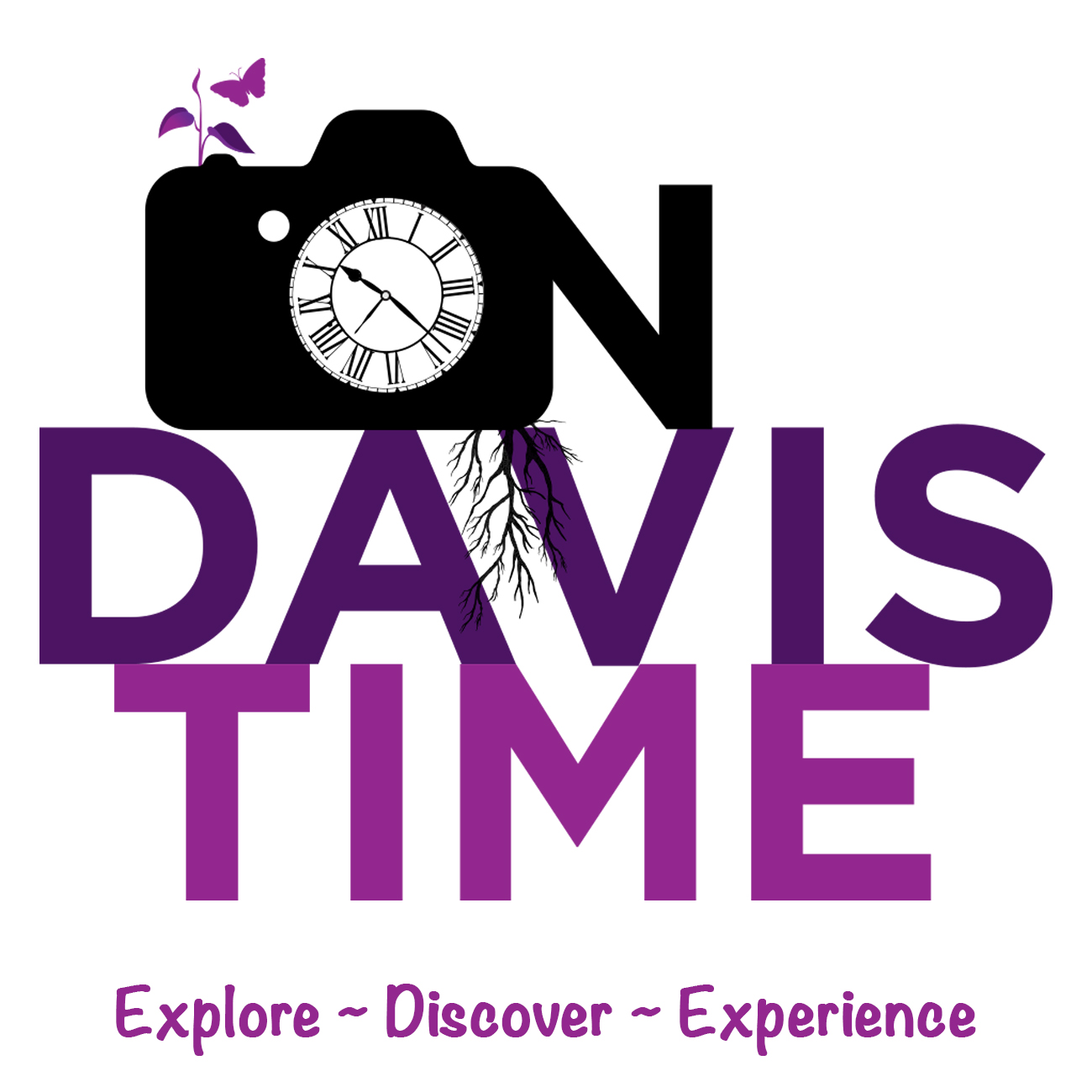What is Geocaching? Only my family’s favorite outdoor activity that can be done practically anywhere at any time!
According to dictionary.com, geocaching is “the outdoor sport or game of searching for hidden objects by using Global Positioning System (GPS) coordinates posted on the internet”. This is at the same time everything that geocaching is, but explains nothing of how awesome it can be.
With more than 2.5 million geocaches in over 180 countries, you truly can geocache just about anywhere. We even found one on Castaway Cay, when we stopped on our Disney Cruise! Not only for vacation, geocaching is a great activity for killing time between softball or hockey games, and breaking up long car rides (we have found several at rest areas and picnic spots). Geocaching has also encouraged us to explore our own city, and brought us to places we may not have visited otherwise.

How to get started Geocaching
Geocaching can be done with a GPS unit, or a Smartphone. I know there are some geocaching purists out there that snub their noses at the use of a smart phone…but it’s my preferred method and I’m sticking to it. To get started, register for a free basic account on Geocaching.com, download a geocaching app to your phone and sign in to your account through the app. Geocaching.com provides their “official” app for free (Apple & Android), but we much prefer Cachly. Yes, Cachly is $5, but well worth it in terms of functionality and ease of use. The Geocaching Junkie already did a great comparison of the apps HERE, if you want to weigh the pros/cons of which app to use.
Once signed into the app, you can look at the map which will show you where you are, and all of the Geocaches around you. Select a geocache to see the type, description, difficulty level, and terrain. Make sure you know what you are in for before attempting to find a cache. If the description says there are mosquitos, bring insect repellant. If it says bush whacking is necessary…maybe don’t wear flip flops. Also, when you are just starting out you may want to stick with a difficulty of 1 or 2, and work your way up to the more difficult caches.
Once you have selected your cache, take the option to “Navigate to Cache” and head that way!
What are you looking for?
There more than a dozen different types of geocaches, and a “hidden object” can be just about anything. Our favorites tend to be Traditional Caches (which are actual physical containers of some sort), and Earth Caches (which take you to beautiful and/or interesting places that you may not have found on your own).
And when I say that traditional caches are “containers”, I mean that they can be absolutely anything that will hold a paper log. They can be very small and contain nothing but a paper log, like the tiny plastic tube of an eyeglass repair kit. Or as large of a container as can be hidden. One of our all time favorite caches was a repurposed newspaper dispenser, Yes, you needed a quarter to get into it, but you got it back from the little orange holder at the top – inside was a bucket full of awesome trading items. To date, the largest traditional cache we have ever found!

While some geocaches are hidden in relative plain site like the newspaper box, some are very cleverly hidden. We have found them in trees (with a pulley system to get them down), in hollow logs, and in containers that are made to look like other items. A very common “trick” is containers like magnetic bolts that unscrew to reveal the log inside.

What do you do when you’ve found it?
Half the fun is finding the cache, but there is still more to do! All traditional caches will contain a log. In the smallest caches, the log will be the only thing inside. You simply put the date and your geocaching name on the log and replace it. In larger caches, there may be trading and/or collectible items inside. If you do choose to take something from the cache, it is expected that you will leave something of equal or greater value. On many occasions, we will leave treasures without removing anything from the cache – our way to pay it forward to other geocachers. You will also want to log your cache find on geocaching.com, using your chosen app. When logging online, you may write a story, give helpful information to the cache owner (needs new log, etc) or upload photos. Please be sure when uploading photos that you do not ruin any surprises for geocachers that come after you! Note: trading/collectible items are different than TRAVEL BUGS. Travel bugs are intended to travel from geocache to geocache, and not to be kept by a cacher. If you do not know what to do with a travel bug, please leave it for another geocacher, or read a simple explanation of what to do with them HERE.
Souvenirs and Milestones
Souvenirs are virtual badges collected in your Geocaching.com account, and are earned for different activities. Each different U.S. state that you geocache in will earn you the souvenir for that state. Souvenirs may also be issued for events. For example ‘Haunted Hides’ near Halloween, and ‘International EarthCache Day 2016’ near Earth Day.
Outside of souvenirs, it is fun to track geocaching “firsts” and milestones such as your 10th, 50th, 100th (and more), geocaches. Our family recently commemorated our 100th find with a poster and family selfie at the site of the 100th geocache!

Geocaching is FUN, you should do it.

